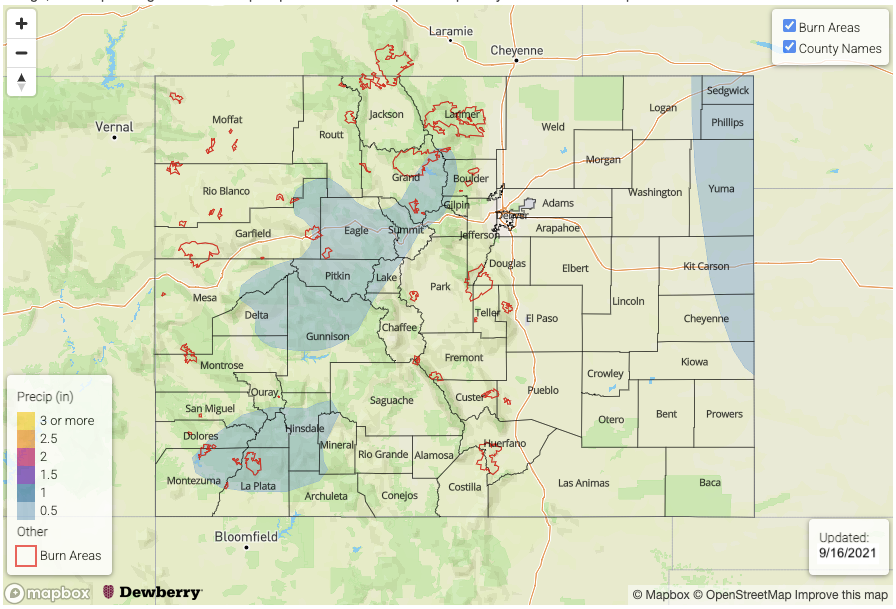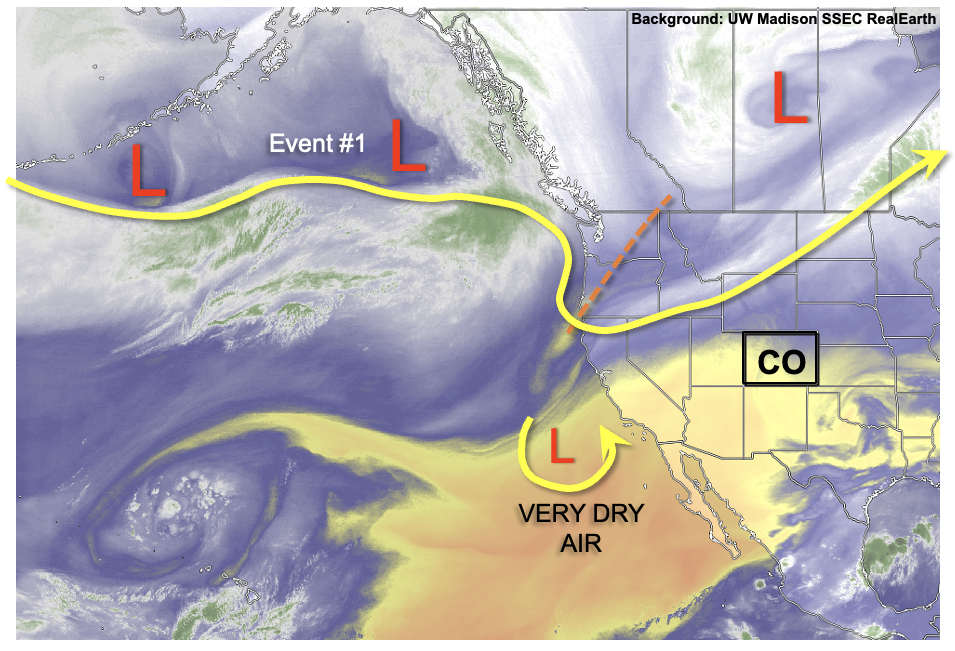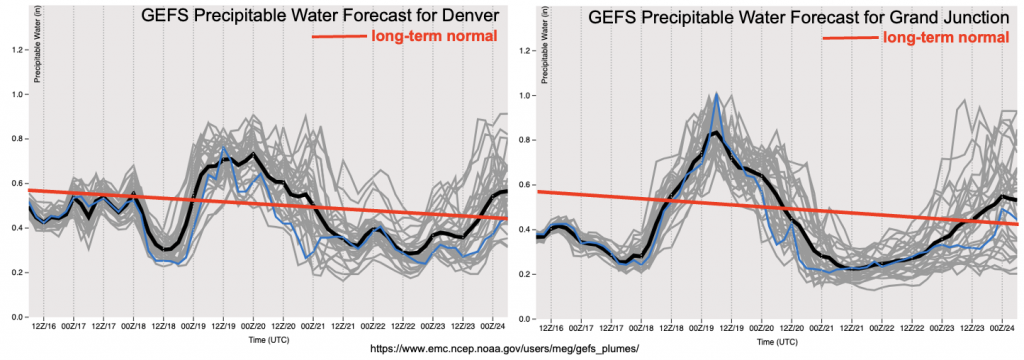Issue Date: Thursday, September 16th, 2021
Issue Time: 1PM MDT
Valid Dates: 9/17-10/1
A hot start to September has left the whole state with temperatures as much as 8F above normal through the first half of the month, leaving many yearning for some fall weather. Fortunately, Mother Nature will answer the call, at least briefly. As shown in the water vapor image, below, a series of strong troughs will persist over the northwest quadrant of the US for the next 3-5 days ushering in cooler weather. Additionally, at least some moisture advection will support a few days of scattered to locally numerous rain (and yes, snow) showers mainly over the drought besieged Western Slope (Event #1).
As shown in the forecast Precipitable Water (PW) plumes, below, it will not be easy to get moisture into the state, given the very large pool of extremely dry air over the eastern Pacific (see water vapor image). But nonetheless, moisture will arrive instead from the northwest and provide a 48-hour window of rain showers, snow showers and a few thunderstorms (mainly on Sunday). Coverage will be highest over the central and western parts of the state through Sunday, and then shift eastward on Monday. Unfortunately, the southeast quadrant of the state appears to be left out as dynamics will stay largely to the north.
After the major cooldown associated with Event #1, warming and significant drying is expected statewide with temperatures reverting right back to above seasonal normal. Thereafter, an unusually high amount of disagreement appears in guidance, which can actually be seen in the Grand Junction PW plumes ranging from 0.2 to 0.9 inches by late next week. One set of guidance suggests a strong cut-off low over California will be able to draw much above-normal monsoonal moisture into western Colorado for at least some scattered showers and storms. However, this is completely absent in other guidance with generally dry, warm northwesterly flow prevailing. Given the monsoon season is not quite over, we will at least identify the possibility of this occurring, Event #2. Although, even if the wetter solution occurs, it is unlikely that there will be a flood threat due to fast steering flow and only marginal moisture.
The identified precipitation events are described in more detail below.
Event #1: Saturday – Monday (September 18 – September 20)
No Apparent Flood Threat As Multiple Cool/Cold Fronts Bring Showers And Weaker Storms
There will be a slight chance of showers and weaker storms on Saturday over the Western Slope but only very light precipitation is expected. An increase in precipitation coverage is expected by early Sunday as an initial, weak cool front approaches the state. Moderate intensity rainfall will be possible over central and northern Colorado with max 1-hour values up to 0.5 inches locally. Given sufficient instability, a few storm cells could become severe with damaging wind gusts as they race across the landscape at 30+ mph. Cooler temperatures will begin to overtake the state later Sunday and rain showers will switch to snow showers over the higher terrain of the entire state. By Monday, a more significant cold front will move through the state, which will support additional scattered rainfall and higher elevation snowfall. Isolated to scattered precipitation could also arise over the eastern Plains. However, instability looks almost non-existent by Monday and any thunderstorms that do manage to form will be of the dynamically-driven “low-top” variety and not capable of producing sustained heavy rainfall as they race eastward. Overall though, a widespread light to moderate precipitation event is expected especially for the Western Slope.
Event #2: Friday – Saturday (September 24 – September 25)
Significant Uncertainty But Some Monsoonal Moisture Could Support Western Slope Precipitation; No Anticipated Flood Threat
A return of monsoonal moisture is possible, which would lead to scattered showers and weaker storms mainly over the Western Slope. At this time, even the wetter scenarios would not produce much above 0.5 inches of total precipitation. Thus, a precipitation map is not needed.


